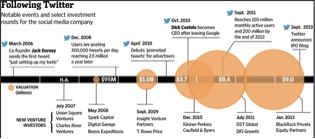SAC Capital Advisors has been under intense pressure from government regulators—and it appears that its chief, Stephen A. Cohen, may be ready to make a deal. Amongst the biggest provisions under negotiation on insider trading charges, as reported this week by the New York Times, is a requirement that SAC may be required to exit the investment advisor business entirely. While Cohen could still manage his personal fortune, he would not be allowed to invest with others’ money; this represents a major strategy shift for the once-famed hedge fund. What’s more, the deal will likely require SAC to admit to criminal misconduct and the parties have “agreed in principle” (according to the Huffington Post) to record-setting penalties and restitution upwards of $1 billion. The plea agreement is no yet a done-deal and either party may yet balk at the proposal, but it will represent a significant victory for the government if its goes through.
Google is on the rise once again. The dominant search-engine company’s stock traded above $1,000 per share this morning for the first time, up more than 13%. Google exceeded analysts’ expectations, reporting a 23% rise in Internet-related revenue last quarter as the company’s focus on mobile-based content and advertising proved successful. The shift towards smartphones, iPads, and tablets has pushed down cost-per-click ad revenue, but growth Google’s traffic and ad volume has ‘outpaced’ this trend according to a Reuters interview.
